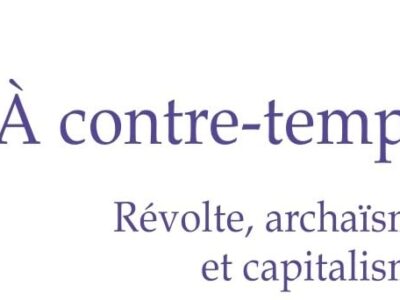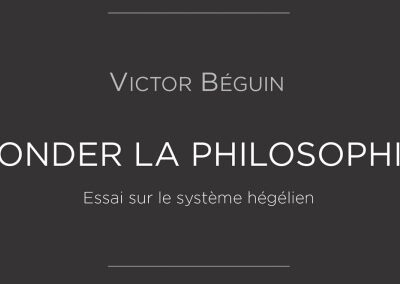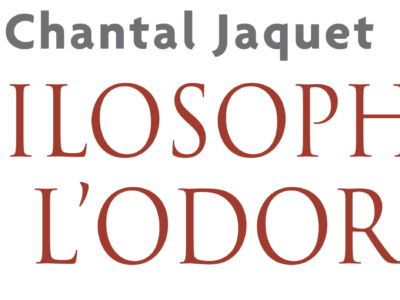Whose rights are they anyway?
Helen Ryland est maîtresse de conférences associée à l’Open University (Royaume-Uni).
Helen Rylaud is an Associate Lecturer at The Open University (UK).
Résumé
L’ouvrage de James Griffin (2008) On Human Rights (Sur les droits humains) est un travail très important et influent de la philosophie contemporaine. Mais alors que la théorie des droits humains comme fondés sur la personnalité humaine développée par l’auteur a suscité de nombreuses critiques, ses affirmations à propos des individus qui entrent dans la catégorie de personne et donc de titulaire de droits humains ont reçu moins d’attention. Cet article cherche à répondre à cette omission. Je commence par rappeler brièvement les vues de Griffin à ce sujet, à savoir que certains êtres humains – incluant les enfants et les personnes souffrant de certains handicaps mentaux – ne sont pas des personnes avec des droits humains. J’explique ensuite de quelle manière Griffin suggère de protéger ces humains exclus – nous pourrions soit faire des exceptions (en disant que certaines d’entre elles, particulièrement les enfants, sont des personnes possédant certains droits humains), soit faire en sorte que les humains exclus disposent d’autres protections morales qui sont tout aussi efficaces, en pratique, que les droits humains. Je défends la thèse d’après laquelle aucune de ces réponses n’est moralement acceptable car toutes deux laissent au moins certains humains exposés à des maltraitances potentielles.
Mots clés: Droits humains – James Griffin – Personnalité – Enfants – Démence – Handicap mental.
Abstract
James Griffin’s (2008) On Human Rights is a very important and influential work in the contemporary philosophy of human rights. Whilst Griffin’s proposed personhood account of human rights has received much critical attention, less focus has been given to his claims about who classes as a person and rights-holder. This article addresses this omission. I begin by outlining Griffin’s claims that some human beings – including children and those with psychological impairments – are not persons with human rights, on his view. I then explain how Griffin suggests we ought to respond to these excluded humans – we could either make exceptions (and say that some, particularly children, are persons with some human rights), or allow that the excluded humans have some other moral protections that are just as good, in practice, as human rights. I argue that neither of these suggested responses are morally acceptable, as both responses leave at least some humans at risk of possible mistreatment.
Key Words: Human Rights – James Griffin – Personhood – Children – Dementia – Psychological Impairments
Introduction[1]
James Griffin’s (2008) On Human Rights has had enormous influence on mainstream philosophical accounts of human rights, and has been subject to much critical discussion. To date, it has been cited over 1400 times, and continues to be discussed in key human rights texts (Freeman 2017; Gilabert 2018). It was also the subject of the 2014 edited collection Griffin On Human Rights, in which leading human rights theorists, like Allen Buchanan, James Nickel, and John Tasioulas, critically assessed Griffin’s arguments (see Crisp 2014).
However, despite the high level of engagement with On Human Rights, one aspect of Griffin’s arguments – his discussions of the rights-holders for human rights – has largely been overlooked. This article addresses this omission by critically assessing Griffin’s ‘Whose Rights?’ (chapter 4 of On Human Rights). I will argue that Griffin’s claims about who does, and more importantly, who does not, have human rights are problematic.
To make this argument, the article proceeds in four sections. §1 outlines Griffin’s personhood account of human rights, and explains which human beings fail to be persons with human rights, on his account. §2 outlines Griffin’s claims about how we (morally) ought to respond to these excluded human cases. Griffin’s first suggestion – the making exceptions response – argues that children are exceptions and gain human rights as they gain personhood. His second suggestion – the other moral protections response – argues that all other excluded humans have other moral rights that are ‘just as good’ as human rights. Together these two responses are supposed to ensure that, despite not having human rights, the excluded humans still have “…the protection they deserve” (Griffin 2008: 95). §3&4 critically assess Griffin’s proposed responses. I argue that both responses fail to give at least some excluded humans the protection they deserve.
I. Griffin’s personhood account of human rights
Simplified greatly, Griffin’s personhood account of human rights argues that there is a binary threshold for personhood – understood in terms of normative agency – that subjects must pass in order to be persons with human rights. On Griffin’s view, to be a normative agent, a subject must have certain underlying goods – which I will refer to as ‘goods of choice’ and ‘goods of resources’.
‘Goods of choice’ means that a subject has made an autonomous choice to pursue some goal and is left at liberty to pursue that goal. For example, consider marriage. Sally has a good of choice if she has voluntarily consented to get married and is allowed to get married (if she so desires). Goods of choice are reflected in Griffin’s ‘autonomy’ and ‘liberty’ conditions for normative agency (2008: 33).
‘Goods of resources’ means that a subject has the minimum abilities and resources needed to successfully implement a chosen action. For example, in our marriage case, this entails that Sally is legally able to get married and has access to a marriage licence and officiant. Goods of resources are reflected in Griffin’s ‘minimum provision’ condition for normative agency (2008: 33).
Griffin argues that these underlying goods are needed for a subject to fully be a normative agent. Central to these underlying goods are ‘agency’ and ‘autonomous choice’. Unless Sally can choose to pursue certain actions, she cannot be said to have the capacity for normative agency. Importantly, to make these autonomous choices, Sally must have high-level reflective abilities; she must be able to reflect on her choices, and give reasons as to why one chosen action should be pursued over others.
Because Griffin’s account has this underlying requirement for autonomy and reflection, it sets the binary threshold for personhood at a level that automatically excludes many human beings[2]. Griffin emphasises that the following are not persons, on his account: human foetuses, human infants, children, those with severe psychological impairments, and subjects with dementia (2008: 53). I will refer to the above subjects as ‘excluded humans’ from this point on. For Griffin, the excluded humans are not persons because they lack the requisite reflective abilities, and as they therefore cannot make autonomous choices, they are not normative agents (persons). As only normative agents (persons) have human rights on Griffin’s account (2008: 33-36, 44-46), this entails that the excluded humans also do not have human rights.
II. Griffin’s claims about how we could respond to the excluded humans.
This outcome – that some human subjects are not persons with human rights – could seem problematic. If left unchecked, it could be taken to entail that the excluded humans lack important moral protections and can be treated in ways that we would normally deem morally impermissible (e.g., lying to them, abusing them, killing them, etc.). Griffin is aware of this concern and argues that it follows from “…the destructive modern tendency to turn all important moral matters into matters of rights, especially human rights” (2008: 95). From Griffin’s perspective, it is not problematic to claim that the excluded humans are not persons with (full) human rights. This is because there are other moral reasons to treat them well, and so the excluded humans can still have “…the protection they deserve” (95). To explain this further, Griffin offers two suggestions, outlined below, as to how we ought to respond to the excluded humans.
II.1. The making exceptions response
The making exceptions response follows from a tension between two claims. First, because excluded humans do not meet the binary threshold for personhood (normative agency), they are not persons with human rights. Second, there are some excluded humans – specifically children – whom we want to have human rights. This is because we are particularly concerned with the mistreatment of children (Griffin 2008: 83). To resolve this tension, the making exceptions response aims to explain why we can make an exception for children, and say that they have some human rights. This explanation has two parts.
First, there needs to be something special about children that gives them, but not our other excluded humans, human rights. Griffin explains this in terms of children having the capacity to become normative agents (94-95). As he puts it: “Children are capable of some degree of agency… The autonomy of children of only a few years sometimes has to be respected … We should see children as acquiring rights in stages – the stages in which they acquire agency” (95). On this view, children are exceptional – in the sense of somewhat being persons with human rights – because they have a degree of the relevant personhood properties (normative agency), and will gain more personhood as they mature.
From this, the making exceptions response needs to explain what human rights children actually have, in virtue of being exceptional cases. As detailed above, Griffin accepts that children should have human rights that are proportionate to the amount of normative agency that they have (94-95). On his view, children have fewer human rights than the standard adult human but, when they do have a right, their rights claims are just as strong. Importantly, these proportional rights supposedly ensure that children, as exceptional cases, have some human rights which protect against possible mistreatment.
II.2. The other moral protections response
The other moral protections response takes a more global view and attempts to accommodate all of our excluded humans (infants, subjects with dementia, etc.). Griffin argues that the excluded humans may “…have certain general moral rights simply in virtue of being human – only analogous to human rights, it may be, but for all practical purposes just as good” (83).
This response depends on the idea that there exist some general moral rights that are practically equivalent to human rights. Such practical equivalency is necessary for these other moral rights to be ‘just as good’ as human rights. To understand this solution, we thus need to determine what this ‘practical equivalency’ entails. This is important as Griffin fails to fully explain the concept himself.
Moral human rights are generally thought to correspond to strong moral duties. We can assume that, for the other moral rights to be practically equivalent to human rights, they must correspond to equally strong moral duties as human rights. It is these moral duties that ensure that, in practice, rights protections are recognised and enforced.
Griffin argues that human rights correspond to strong moral duties as a result of being grounded in the intrinsically valuable concept of normative agency (see §1). It is wrong to mistreat a normative agent, and for this reason, normative agents have human rights. For the other moral rights to be practically equivalent to human rights, they must also possess this moral weight. To do this, the other moral rights must be grounded in some ethically substantive property.
It is clear that this ethically substantive property cannot be normative agency. There are two reasons for this. First, Griffin has already explained that excluded humans cannot meet his binary threshold for normative agency (§1). Grounding the other moral rights in normative agency would, therefore, also exclude the excluded humans from having other moral rights. This is counterproductive, given the aim of the other moral protections response. Second, if the other moral rights were grounded in normative agency, and Griffin claimed that the excluded humans could have these other moral rights, then this would entail that the excluded humans also have the requisite normative agency for human rights. There would be no reason to not give excluded humans human rights, rather than practically equivalent other moral rights.
To retain the distinction between human rights and other moral rights, Griffin must ground the other moral rights in a different ethically substantive property. There are a number of properties that could take this role, e.g., sentience, self-awareness, the capacity to have interests, etc. For now, we do not need to say which of these properties is the correct ground for the other moral rights. The point is simply that the other moral rights are ground in some morally relevant property (Q), the excluded humans have this property Q, and so can also have the other moral rights. On Griffin’s view, if the excluded humans have the other moral rights, then they are no more at risk of mistreatment than if they had human rights.
II.3. The state of play
Though they differ in content, both of Griffin’s suggested responses to the excluded humans work on the same underlying mechanics. Both responses invite us to accept two claims: i) excluded humans are not (full) persons with (full) human rights, and ii) excluded humans are nevertheless morally protected against possible mistreatment. §3 and §4 will argue that neither of Griffin’s responses works. To do this, I will critically assess the ‘making exceptions’ and ‘other moral protections’ responses and argue that there is a dilemma that affects both responses. On horn one of the dilemmas, the excluded humans are protected against mistreatment, but only because they are persons with human rights (refuting claim i, above). On horn two, excluded humans are not persons with human rights, but are also not sufficiently protected against possible mistreatment (refuting claim ii, above).
III. Problems with the making exception response
To recap, Griffin’s making exceptions response makes three claims. First, standard adult humans have human rights in virtue of having some morally relevant property (property ‘P’). For Griffin, property P is normative agency. Second, excluded humans do not have property P. Third, some excluded humans have another property (property ‘Q’) which makes them an exception, and allows them to have (some) human rights. As detailed in §2, Griffin seems to see property Q as a specific relational property that consists of the fact that the property-holder will develop property P in the future. Property Q is thus the capacity to become a normative agent, at some point.
To make this less abstract, consider the following situation. Chris is a standard adult human with property P. Anne is an excluded human who is an exception, and thus she has property Q but not property P. Brad, in contrast, is an excluded human who does not have property P or property Q, and so he is not an exception.
On Griffin’s view, if Anne possesses property Q, we can be reasonably certain that she will have property P (normative agency) in the future. Property Q thus highlights Anne’s potential. One day, Anne will be like Chris; she will have property P and be a (full) person with (full) human rights. In contrast, because Brad does not possess property Q, he will never come to have property P. For example, this may be because he has advanced dementia and so lacks the capacity for normative agency (according to the view outlined in §1). As Brad does not have potential personhood, he is not an exception according to the view under consideration.
One problem with the above is that in all other respects Anne and Brad could be exactly alike. Both could have the same cognitive abilities, they could be equally sentient, they could interact with others in the same way, etc. Importantly, neither Anne nor Brad has personhood (property P) now. This means that property Q must do all the work to justify treating Anne and Brad differently. Below, I will argue that property Q, understood in the way explained above, cannot be substantial enough to justify this difference in treatment.
The above view assumes that property Q, consisting merely of potential, is ethically weighty because having it means that Anne will gradually gain personhood and human rights (both of which are, themselves, morally important). Griffin presents this in terms of Anne being a child, and her personhood and rights increasing as she matures and develops her abilities (§2). However, this ignores that the converse could also happen. To see this, suppose that Brad does have advanced dementia. Like Anne, Brad does not have property P and so does not meet the threshold for being a person with human rights. Yet, prior to developing dementia, Brad did meet this threshold and was a person with human rights. In this sense, Brad also stands in a relation to Chris (our standard adult human with human rights). Whereas Anne is gaining property P and will become a person with human rights, Brad was a person with human rights, but is now gradually losing property P.
In the above example, Anne and Brad have all the same properties, except for the direction of travel of P – Anne gains property P, whilst Brad loses property P. On Griffin’s view, we seemingly need to accept that this difference in direction of travel is morally significant. This is because, on his ‘making exceptions response’, we must be able to state that Anne gains human rights as she gains property P, but that Brad is not similarly exceptional and has no human rights.
The difficulty with the above is that it is unclear why this should be the case. There is nothing inherently morally significant about the direction of travel – going up or down a scale. Because of this, and because Anne and Brad do have all of the same other properties, it is arbitrary discrimination to give Anne the human rights that she has (because of her place on the scale) but to deny the very same rights to Brad. To clarify this, we can note how the difference in treatment between Anne and Brad reflects the sort of problematic arbitrary discrimination that we see in sexism or racism. In all three cases, individuals are given a special status because they possess some morally irrelevant property (being male, being white, gaining the property P). The treatment that follows from this (preferential treatment; being given human rights) is unjust because it is grounded in this morally irrelevant property, and so does not reflect morally important differences between the relevant individuals (people who are male and people who are not male, people who are white and people who are not white, Anne and Brad). If we focus on morally relevant properties (such as having a degree of property P) then Anne and Brad are the same and should be treated in the same way – this would be just. However, this cannot be done if we assume that property Q is the property of becoming a person.
At this point, my opponent could retort that, to avoid the above issue, we ought to simply abandon talk of potential and define property Q in some other way. On this new view, property Q is something other than the property of becoming a person. For example, we could instead see property Q as sentience, or group membership, or rationality, etc. Again, we can then imagine that Anne has property Q when it is understood in this way, whilst Brad does not.
The difficulty with this new view is that it would entail that there are two grounds for human rights. Both property P and property Q give those who have them human rights. This is problematic for Griffin’s view as, on the above explanation, property Q is no longer linked to the binary threshold for personhood: normative agency (§1). It is not the case that Anne has some human rights because she is an exception in this case (in the sense of having a degree of normative agency). Rather, Anne now has some human rights because she has property Q which itself grants personhood and human rights.
IV. Problems with the other moral protections response
To recap, the other moral protections response accepts three claims. First, standard adult humans have human rights. Second, excluded humans do not have human rights. Third, excluded humans have some other moral rights instead that are just as good, in practice, as human rights. This third claim requires us to accept an assumption: that human rights are good enough in practice. To clarify this further, consider the following case. Debra is a standard adult human, and she has human rights. Her human rights will be good enough in practice if they provide her with protections that are good enough for her, in the sense of protecting her from the most serious threats and harms.
 I argue that Debra’s human rights are good enough in practice because they have certain important distinguishing structural features. Whilst there is some disagreement about what the distinguishing structural features of human rights are (Cruft, Liao, and Renzo 2015; Nickel 2007), there is consensus that at least the following three features (i) distinguish human rights from other rights, and (ii) ensure that human rights are good enough in practice, by protecting rights-holders from serious threats.
I argue that Debra’s human rights are good enough in practice because they have certain important distinguishing structural features. Whilst there is some disagreement about what the distinguishing structural features of human rights are (Cruft, Liao, and Renzo 2015; Nickel 2007), there is consensus that at least the following three features (i) distinguish human rights from other rights, and (ii) ensure that human rights are good enough in practice, by protecting rights-holders from serious threats.
First, human rights are generally thought to be at least weakly universal (Cruft, Liao, and Renzo 2015; Nickel 2007). This means that all relevant rights-holders (persons) have human rights. Because Debra is a person, she has human rights. Importantly, it is only personhood that Debra needs in order to be a rights-holder. There are no further requirements, like having specific characteristics (race, gender, etc.), or meeting some criteria for moral desert, that Debra must meet in order to have human rights. In this sense, human rights are different to special minority rights (Nickel 2015) and qualified rights (Stemplowska 2015) respectively, which do take account of these features when deciding who classes as a rights-holder.
Second, human rights are typically classed as minimum standards, rather than socio-political ideals (Cruft, Liao, and Renzo 2015; Nickel 2007). Debra has human rights to that which she needs (food, shelter, education) rather than what she wants (a better job, a bigger house) or what it would be ideally good for her to have (complete socio-political equality, world peace). At first glance, it might seem like human rights as minimum standards do not give Debra protections that are good enough for her, at least in practice. It would always be good for Debra to have more than the minimum standards. This, however, confuses ‘what is good’ with ‘what is good enough in practice’. It is only the latter that we are interested in, and this is achieved by giving Debra protections to the minimum things that she needs.
Finally, human rights are generally understood to be high priority norms (Cruft, Liao, and Renzo 2015; Nickel 2007). This means two things. First, in cases where there is a conflict between a human right and another moral consideration, the human right will typically be strong enough to outweigh the other moral consideration. Second, when we say that human rights are high priority norms, we also mean that states, as the addressees of rights, have strong duties to ensure that human rights are respected (Nickel 2007). This means that the state is obligated to ensure that its citizens’ rights are protected. The state is required to give Debra fair access to food, shelter, education, etc. Further, when a state does not ensure that its citizens’ rights are protected, other states then have a strong (but not absolute) duty to intervene (Kauppinen 2010). By being high priority norms in this second sense, Debra’s human rights are good enough in practice because the state is duty-bound to give her basic rights, and if they fail in this duty, the international community is morally obligated to intervene. In this sense, there is always, theoretically at least, some state protecting Debra’s rights and ensuring that she is not mistreated.
Above, I have clarified how the three distinguishing structural features can explain why Debra’s human rights are good enough in practice. Each structural feature ensures that Debra is given an appropriate amount of protection and is not at risk of mistreatment. Now that we have addressed the assumption that human rights are good enough in practice, we can return to the third claim of the other moral protections response – that excluded humans have other moral rights that are just as good, in practice, as human rights. To evaluate this claim, let us suppose the following: there is an excluded human, Emma, who has the other moral rights. The third claim demands that, in the same way as Debra’s human rights are good enough for her, Emma’s other moral rights must be just as good, at least in practice.
Option 1: The other moral rights are just as good in practice because they have the same structural features as human rights.
One way of developing this third claim is in terms of a similarity interpretation. On this view, the other moral rights are just as good in practice because they share all of the same distinguishing structural features as human rights. Using the above discussion as a guide, this would entail that the other moral rights too would be weakly universal, minimum standards, and high priority norms. The other moral rights will be weakly universal if they are held by all relevant rights-holders. Emma will be a relevant rights-holder if she meets the grounds for having other moral rights (sentience, the capacity to have interests, etc.). The other moral rights will be minimum standards if they grant Emma protections to that which she needs as a being of her kind. Finally, the other moral rights will be high priority norms if they are typically strong enough to win in conflict cases, and if states have strong duties to see to it that Emma’s other moral rights are respected.
The above similarity interpretation thus works on the assumption that it is the distinguishing structural features that make human rights good enough in practice, so if the other moral rights also have these structural features, then the other moral rights will be just as good. Indeed, if the other moral rights do have these structural features, then it seems like, as with Debra’s human rights, Emma’s other moral rights do protect her against mistreatment and give her protections that are good enough for her.
Problem: If the structural features are the same, this creates a redundancy dilemma.
However, an obvious problem with the similarity interpretation is that, if human rights and the other moral rights do have all the same structural features and do offer the same protections, then human rights and the other moral rights seem to be identical.[3] In what follows, I will argue that this creates a redundancy dilemma which can be viewed in two ways, both of which are problematic.
First, the similarity interpretation could entail that human rights are redundant. Whilst Emma does not meet the ground for having human rights, both Emma and Debra do meet the grounds for having the other moral rights (sentience, having interests, etc.). Consequently, both excluded humans (Emma) and standard adult humans (Debra) are relevant rights-holders for the other moral rights as both can meet the other moral rights’ low criteria for being a rights-holder.
Additionally, if the other moral rights have the same structural features as human rights and offer exactly the same protections, then there would be no benefit to also having human rights. Debra would get nothing extra from having human rights that she would not already have from the other moral rights. As the other moral rights would, in this case, be both more widely-applicable and exhaust the full scope of human rights, it seems like we should favour the other moral rights over human rights.
It is clear that this outcome – human rights are redundant – cannot be what Griffin wants to present. To accept this view, he would need to concede that standard adult humans do not have human rights. As his personhood account of human rights (§1) is designed to show why standard adult humans are persons with human rights, this concession cannot be made.
In order to retain the importance of human rights, we could instead understand the similarity interpretation in a way that would entail that the other moral rights are redundant. On this view, if the other moral rights really do have all the same distinguishing structural features as human rights, then it is plausible to suppose that the other moral rights really are human rights. This is because the structural features mentioned above (weak universality, minimum standards, high priority norms) are supposed to distinguish human rights from other types of rights. If a right has these distinguishing structural features, it thus seems like it must be a human right rather than any other type of right (assuming that the structural features really are distinguishing structural features).
If we accept the above, then we would be accepting that both Debra (our standard adult human) and Emma (our excluded human) have human rights. Once again though, this cannot be what Griffin wants to say. To accept this conclusion – that the other moral rights are redundant and excluded humans have human rights – Griffin would need to accept two things. First, there are at least two grounds for human rights – the personhood ground that Debra meets, and the other ground that Emma meets (sentience, interests, etc.). Second, because both Emma and Debra have human rights, there is no reason to treat them differently. Accepting either of these things would contradict the arguments of §1 as Emma would no longer be excluded from having protections that Debra has.
If the above is correct, then it seems clear that we cannot use a similarity interpretation to understand the other moral protections response. Accepting a similarity interpretation would cause either the other moral rights or human rights to be redundant. If either one of these is redundant, then we cannot make the comparative claim that the other moral rights are just as good, in practice, as human rights.
Option 2: The other moral rights can be just as good in practice without having the same structural features as human rights.
Consequently, to avoid the above redundancy, we could instead interpret the other moral protections response using a difference interpretation. On the difference interpretation, we could state that, provided that Emma gets protections that are good enough for her, her other moral rights can be just as good as human rights, at least in practice, without having the same structural features as human rights. On this view, we could suppose that the other moral rights lack at least one of the distinguishing structural features of human rights. The other moral rights will either not be weakly universal, not be minimum standards, or not be high priority norms. In what follows I will argue that whichever structural feature the other moral rights are stipulated to lack will allow for the objectionable mistreatment of at least some excluded humans. This possibility for mistreatment means that the other moral rights are not just as good, in practice, as human rights.
Problem: The other moral rights do not seem structurally strong enough to protect against mistreatment.
First, if the other moral rights lacked universality, this would entail that there is some property Q that gives some excluded humans the other moral rights, even if having that property does not give the other moral rights to all excluded humans. To clarify this, imagine the following. Emma (an excluded human) has property Q. Frida (another excluded human) also has property Q. Emma and Frida also have all of the same other qualities, and so there are no properties that Frida has but Emma lacks. However, if the other moral rights lacked universality, then Frida could have the other moral rights whilst Emma could lack them. As a result, Emma could lack both the other moral rights and human rights, and would therefore not be protected against mistreatment. If the other moral rights worked in this way, then they would not be good enough in practice because some agents who should have the other moral rights (like Emma) would not be suitably protected.
Alternatively, we could suppose that the other moral rights are not minimum standards. First, we could suppose that the other moral rights entitle Emma to less than the minimum standards. Here, Emma would be lacking certain important protections that she needs as a being of her kind. For example, she may not be entitled to fair access to food, shelter, education, etc. This option is obviously problematic as if Emma’s other moral rights do not entitle her to the minimum standards required to be a being of her kind, then she is at risk of mistreatment and exploitation. Second, and conversely, we could suppose that Emma’s other moral rights entitle her to more than the minimum standards. On this view, Emma is protected against mistreatment, but she now has stronger and/or more extensive rights than Debra. This does not seem to be a view that Griffin would accept as it would make standard adult humans more disadvantaged than excluded humans, and would also make human rights worse than the other moral rights.
Finally, it could be suggested that, unlike human rights, the other moral rights are not high priority norms. In saying this, we could mean one of two things. First, in cases of conflict between other moral rights and other moral considerations, the other moral rights would be outweighed by the other moral considerations. To see this, imagine a case. Suppose there is a surgeon with a dilemma; she has been scheduled to perform important surgery at the same time as she has promised to meet a friend. Here there is a conflict between the patient’s rights (to life, to surgery, etc.) and another moral consideration (the duty to keep a promise). Now suppose that Debra and Emma are the surgeon’s patients. In the case of Debra, our surgeon would be morally obligated to perform the surgery and break her promise. This is because Debra’s human rights are high priority norms, and so they outweigh the surgeon’s moral obligation to keep her promise. In the case of Emma, however, it is not clear that the surgeon would have to perform the surgery. If Emma’s other moral rights are low priority norms, then Emma’s rights would not necessarily outweigh the surgeon’s moral obligation to keep her promise. For this reason, Emma’s other moral rights would not be just as good in practice as Debra’s human rights. Emma’s rights (but not Debra’s) would be easily expendable, and Emma could therefore be mistreated in ways that Debra could not be.
Alternatively, we could mean that, because the other moral rights are low priority norms, states do not have strong duties to ensure that the other moral rights are respected. On this view, if there were good reasons for allocating resources elsewhere (such as increased general welfare), then the state would not be obligated to provide Emma with sustenance, shelter, education, etc. The difficulty with this is that it would require us to accept a different, and notably worse, system for the protection of excluded humans than we currently have. Recall that the excluded humans include human foetuses, human infants, children, those with severe psychological impairments, and subjects with dementia (§1). Many people think that states should provide strong protections to these particularly vulnerable groups. This intuition is reflected in a series of reports by Human Rights Watch, including ‘It’s not normal’ (October 18, 2018); ‘I needed help, instead I was punished’ (February 6, 2018), and ‘They want docile’ (February 5, 2018). These reports – which respectively cover abuses against children, those with psychological impairments, and those with dementia – highlight how the rights and protections of the excluded humans are considered to be important, and how the mistreatment of these excluded humans is seen as a problem worthy of international concern. If the other moral rights were only low priority norms, however, then states would lack this strong moral obligation to protect vulnerable human beings.
If the above is correct, then we cannot accept the difference interpretation. To accept the difference interpretation, we would need to state that the other moral rights lack at least one of the distinguishing structural features of human rights but, as argued above, removing any of these structural features causes Emma to be at risk of mistreatment and to not have protections that are good enough for her. As neither the similarity nor difference interpretation works, we cannot accept the other moral protections response.
Conclusion
This article has critically assessed James Griffin’s arguments in ‘Whose rights?’ (Chapter 4 of On Human Rights). I explained how Griffin’s personhood account of human rights excludes some human beings from being persons with human rights (§1). In §2 I outlined how Griffin claims we ought to respond to the excluded humans – by either making exceptions, or accepting that they have some other moral rights that are just as good, in practice, as human rights. In §3&4 I argued that neither of these responses work, as both leave at least some excluded humans at risk of potential mistreatment. Consequently, in contrast to Griffin’s claims, the excluded humans do not seem to have “…the protection they deserve” (Griffin 2008: 95) on his account.
Bibliography
Crisp, Roger (ed.) (2014) Griffin On Human Rights. Oxford: Oxford University Press.
Cruft, Rowan, Liao, S. Matthew, and Renzo, Massimo (ed.) (2015) Philosophical Foundations of Human Rights. Oxford: Oxford University Press.
Freeman, Michael (2017) Human Rights (Key Concepts) 3rd edition. Cambridge: Polity Press.
Gilabert, Pablo (2018) Human Dignity and Human Rights. Oxford: Oxford University Press.
Griffin, James (2008) On Human Rights. Oxford: Oxford University Press.
Human Right Watch (2018) “I Needed Help, Instead I Was Punished”: Abuse and Neglect of Prisoners with Disabilities in Australia. Available at: https://www.hrw.org/report/2018/02/06/i-needed-help-instead-i-was-punished/abuse-and-neglect-prisoners-disabilities (Accessed: 05 October 2020).
Human Rights Watch (2018) “It’s Not Normal”: Sexual Exploitation, Harassment and Abuse in Secondary Schools in Senegal. Available at: https://www.hrw.org/report/2018/10/18/its-not-normal/sexual-exploitation-harassment-and-abuse-secondary-schools-senegal (Accessed: 05 October 2020).
Human Rights Watch (2018) “They Want Docile”: How Nursing Homes in the United States Overmedicate People with Dementia. Available at: https://www.hrw.org/report/2018/02/05/they-want-docile/how-nursing-homes-united-states-overmedicate-people-dementia (Accessed: 05 October 2020).
Kauppinen, Antti (2010) ‘Human Rights and Legitimate Authority’ [Draft].
Nickel, James W. (2007) Making Sense of Human Rights (Second Edition). Oxford: Blackwell Publishing.
Nickel, James W. (2015) ‘Person Deserts and Human Rights’, in Cruft, Rowan, Liao, S. Matthew., and Renzo, Massimo (ed.) Philosophical Foundations of Human Rights. Oxford: Oxford University Press, 153-165.
Stemplowska, Zofia (2015) ‘Can Moral Desert Qualify or Justify Human Rights?’ in Cruft, Rowan, Liao, S. Matthew, and Renzo, Massimo (ed.) Philosophical Foundations of Human Rights. Oxford: Oxford University Press, 166-176.
[1]This article contains material written by the author as part of a wider PhD thesis (‘On the margins: personhood and moral status in marginal cases of human rights’), submitted to the University of Birmingham (UK) in June 2020, and successfully defended in September 2020. This PhD thesis was funded by an AHRC Midlands3Cities Doctoral Training Partnership Studentship (grant number: AH/L50385X/1).
I would like to thank Jussi Suikkanen, Merten Reglitz, Heather Widdows, Jeremy Williams, and Christopher Woodard for their helpful comments on the PhD thesis that this article is based on. Thanks also to the reviewers and editor of this journal for their insightful comments.
[2]It also excludes nonhumans (e.g., nonhuman animals). Given the need for brevity in this article, I will not consider this issue further, but will simply acknowledge that the exclusion of nonhuman animals from being persons and rights-holders can also be problematic.
[3]I am assuming that the other moral rights would offer the same or very similar moral protections to human rights (e.g., that whatever protections Emma would have had with human rights (life, liberty, etc.) have an equivalent other moral right). Note, however, that the redundancy objection outlined below could still apply if the other moral rights had the same structural features as human rights, but offered different protections. This is because if the structural features are distinguishing structural features (held only by human rights), then the other moral rights would still seem to be human rights, in virtue of having the relevant structural features.














